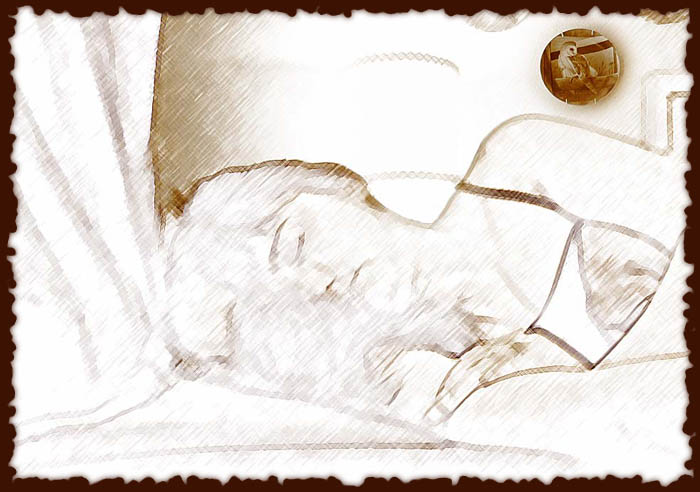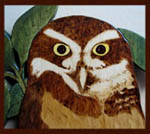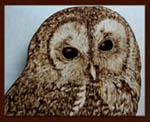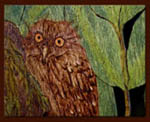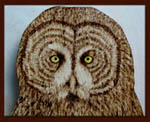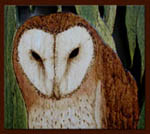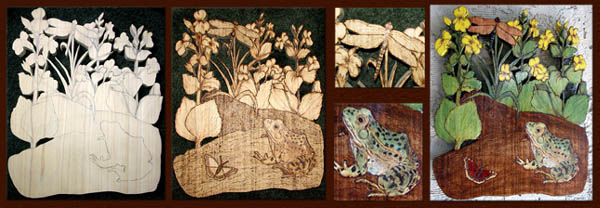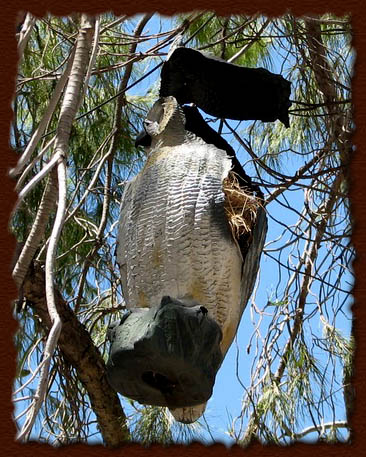Day-dreaming, true dreams, split of second inspirations...
Never had a problem with inspiration. Like a program running in the background of your PC, the same is with the ideas. Sometimes they need more time to get mature enough, sometimes they are ripe in no time, some of them are constantly evolving.
I am grateful whatever made that fine tuning efficient, for just like Djordje Balasevic said once: "I am not the one who is making all those songs, I simply am here to put on paper what This Guy Above is whispering in my ear" and he DOES amazing songs!
Or Serj Tankian in his interview reminding recently that "all the art and music come from the Universe not from the Individual"
However we say it, I know who ever has this fine tuning in more or less extent, know exactly what I am talking about.
Inspiration is there, perspiration as well, endless hours of hard work (cuts, burns, spills, oops and ops), and patience of my family (yes, thank you!) to cope with mess and me being hectic "just to finish up this project" or jumping in the middle of the dinner / TV show / talk... you name it, and go to put on paper idea while it's still there so vivid...
Not less important, my family is there to fire up this inspiration even more, whether knowingly or not. Sometimes I spot this "Oh, no!!!!!!!!!!" glimpse in the eyes when some of them says something that triggers the idea and from that point on, that particular person had to deal with the fact that he/she has to accept responsibilty of being the accelerant for another creative storm in the house.
I have a need to present my point of view about techniques related to pyrography (woodburning). It is the truth that not always planned in the head is what it appears at the end of the creative process. There are many variables. Two most important ones are type of wood and theme. If wood has strong sap (such as pine or spruce, for instance), it will not allow darker shapes to be achieved in the way it resembles enough original idea. However I love using these types of wood for the sofness they have that allows carving and the light weight they have, which is very important when I make mirror frames.
Hardwoods with fine grain, such as the most used one, poplar, can be also very difficult to work on darker shades if wood itself is not curred at the maximum level (former Yugoslav readers can relate this to the famous poems' her, Marko Kraljevic: "suva drenovina" would be the best one for pyrography projects). Basswood sometimes has this shade which disables white parts of the object to be presented at satisfactory level.
Now, there are different items, pendants, ornamental or usable items. Media for pendants are poplar and bubinga wood. Poplar is sturdy enough to withhold pressure and not to be chipped off, and again it is light enough to enable most of the shades and woodburning to be nicely visible. Bubinga is also sturdy, but darkness of the wood makes hard to achieve all the shades, thus staining as experiment in projects involving this type of wood. Ornamental and usable objects are as much as possible life size animals. It again requires attributes of the used wood that will result in firm shape, and well presented theme species.
Personal preferences however, are the ones about staining vs. pure pyrography. Here are some examples and my points of view while choosing if it will be stained or not and if yes, in what extent.
Here are few examples of life size owls and my choices (names are links to larger image in the new browsers):
Pulsatrix perspecillata Strix aluco Xenoglaux loweryi Strix nebulosa Tyto alba Tawny Owl, Strix aluco, and Great Gray Owl, Strix nebulosa, as life-size individuals are done dominantly by pure pyrography while contrast was added with staining leaves and branches. Tawny Owl, one of my favourite artoworks, was so easily performed without any additional staining, perhaps due to resemblance of it's natural feather colors and dark large eyes. Great Gray Owl, however, having it's feathers as different shades of grayscale, was also logical choice of sole woodburning, but obvious touch of yellow stain was needed for it's eyes.
Life-size artworks of Spectacled Owl, Pulsatrix perspecillata, as well Barn Owl, Tyto alba, were much more demanding. Barn Owl having whiteness of it's feathers and face, simply didn't look right without slight touch of the stain that enhanced the contrast amongst the feathers. Spectacled Owl demanded everything but white around eyes to be underlined with different staining over several layers of woodburning.
At the end, Long-whiskered Owl, Xenoglaux loweryi, already strange enough, really needed staining over layers of woodburning. It deserves it, undoubtedly. Please visit OwlPages.com for more information about this rarely recorded species.
For more examples of process of making woodburned artwork and reasons for use the stains, see the link below for Leopard Frog custom ordered artwork.
Explaining soft sculpture is not a question at all: my creativity is utterly unleashed there, undoubtedly efficient, with the minimum of planning. Sometimes I have a feeling my hands holding needles are simply reading the hidden "file" already existing in my mind for long period of time.
There is literally no limits of what kind of artwork can be made using pyrography as main technique. I have tried to sort my artwork items, and those that were hard to sort are in major two groups: ornaments and miscellaneous. Ornaments do not have necessarily usable purpose. Most of the time they are life size wood portraits of animals, designed to be hanged on the wall. Under miscellaneous group you can find items such as spice rack, key holders, pencil holders, name plaques, boxes of different sort etc. At recent show (The Summer Art Festival in Winston Salem) a pair of drum sticks was personalized with woodburning technique, by engraving personal message and the name of the young drummer.
NOTE: It is important to say woodburned items are not supposed to be exposed to direct sunlight. Sometimes people come with idea to place an owl looking like life-size ornament in order to scare the birds. In Arizona, where we lived before coming to Winston Salem, unusual destiny happened to one of plenty very popular plastic Great Horned Owl looking like figures:
Obviously birds couldn't care less :-))
